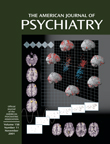Gabapentin for Clozapine-Related Seizures
Ms. A was a 65-year-old woman with a 31-year history of paranoid schizophrenia. Her psychotic symptoms were not well controlled despite treatment with haloperidol, 40 mg/day, and procyclidine, 10 mg/day. She underwent other trials with risperidone, quetiapine, and olanzapine. There was no history of seizures or alcohol abuse. Medical and laboratory findings were negative. Clozapine was added to her regimen of haloperidol, 10 mg/day, and procyclidine, 5 mg b.i.d. Her dose was started at 12.5 mg/day and increased to 37.5 mg/day over a 4-week period.Two days after the last increase Ms. A had a generalized tonic-clonic seizure. Clozapine treatment was discontinued; an EEG revealed bihemispheric diffuse slowing and some epileptiform activity. Moderate brain atrophy was observed on magnetic resonance imaging. Ms. A had had side effects when taking divalproex sodium when it had previously been used in combination with antipsychotics. Therefore, instead of divalproex sodium, gabapentin, 1200 mg/day, was added prophylactically to her treatment with haloperidol and procyclidine before she again tried clozapine. Her clozapine dose was increased to 300 mg/day over a period of 2 months.Her therapeutic response remained poor, and because the risk of seizure increases with clozapine at doses of more than 300 mg/day (2), an augmentation strategy was initiated, first, by adding risperidone, 4 mg/day. Thereafter, risperidone was replaced by fluphenazine, 10 mg/day. Her therapeutic response remained poor, and it was decided that she should stop taking clozapine. During clozapine tapering Ms. A contracted pneumonia, so cefuroxime was added to her 150 mg/day of clozapine, 10 mg/day of fluphenazine, and 1200 mg/day of gabapentin. Ms. A became somnolent, so her dose of gabapentin was decreased to 600 mg/day.The next day Ms. A had a second generalized tonic-clonic seizure, and clozapine treatment was stopped. Her EEG findings were similar to previous measurements. Over the past year Ms. A’s psychotic symptoms have improved somewhat with treatment with quetiapine, 250 mg/day, and her EEG recordings have indicated a significant reduction of epileptiform activity.
References
Information & Authors
Information
Published In
History
Authors
Metrics & Citations
Metrics
Citations
Export Citations
If you have the appropriate software installed, you can download article citation data to the citation manager of your choice. Simply select your manager software from the list below and click Download.
For more information or tips please see 'Downloading to a citation manager' in the Help menu.
View Options
View options
PDF/EPUB
View PDF/EPUBLogin options
Already a subscriber? Access your subscription through your login credentials or your institution for full access to this article.
Personal login Institutional Login Open Athens loginNot a subscriber?
PsychiatryOnline subscription options offer access to the DSM-5-TR® library, books, journals, CME, and patient resources. This all-in-one virtual library provides psychiatrists and mental health professionals with key resources for diagnosis, treatment, research, and professional development.
Need more help? PsychiatryOnline Customer Service may be reached by emailing [email protected] or by calling 800-368-5777 (in the U.S.) or 703-907-7322 (outside the U.S.).

